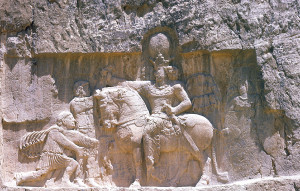Babylonian Jewry (586 BCE-7th century CE)
- From Text to Tradition
- Historical surveys
- Primary sources
- Josephus, Antiquities XX, 17-95- The Conversion of the House of Adiabene
- Josephus, Antiquities XVIII, 310-79- A Jewish Babylonian Principali
- Jerusalem Talmud Yevamot 12-1 (12c)- The Tannaitic Movement in Babylonia
- Babylonian Talmud Sanhedrin 32b- The Great Tannaitic Sages
- Mishnah Yevamot 16-7- The Tannaitic Tradition in Babylonia
- Genesis Rabbah 46-11- The Circumcision of the Sons of Ptolemy
- Iggeret Rav Sherira Gaon 9-10- The Amoraim
- Seder Olam Zuta, 9-10- History of the Exilarchs
- Babylonian Talmud Horayot 11b- The Status of the Exilarch vs. the Patriarch
- Babylonian Talmud Hullin 92a- The Two Princes
- Babylonian Talmud, Bava Qamma 58b- Judgement of the Exilarch
- Babylonian Talmud Shabbat 48a- Lax Observance in the Home of the Exilarch
- Babylonian Talmud Bava Batra 55a- The Law of the Land
- Iggeret Rav Sherira Gaon 11- The Last if the Amoraim and the Savoraim
- Images




